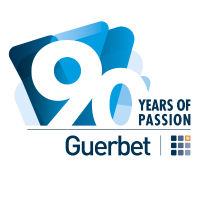预约演示
更新于:2025-05-07
Ioxaglate Meglumine/Ioxaglate Sodium
更新于:2025-05-07
概要
基本信息
原研机构 |
在研机构- |
非在研机构 |
权益机构- |
最高研发阶段撤市 |
首次获批日期 美国 (1985-07-26), |
最高研发阶段(中国)- |
特殊审评- |
登录后查看时间轴
结构/序列
分子式C24H21I6N5NaO8 |
InChIKeyZZIJQDVKCSWVBD-UHFFFAOYSA-N |
CAS号67992-58-9 |
查看全部结构式(2)
关联
100 项与 Ioxaglate Meglumine/Ioxaglate Sodium 相关的临床结果
登录后查看更多信息
100 项与 Ioxaglate Meglumine/Ioxaglate Sodium 相关的转化医学
登录后查看更多信息
100 项与 Ioxaglate Meglumine/Ioxaglate Sodium 相关的专利(医药)
登录后查看更多信息
216
项与 Ioxaglate Meglumine/Ioxaglate Sodium 相关的文献(医药)2021-06-01·APL Bioengineering
Spectral CT imaging of human osteoarthritic cartilage via quantitative assessment of glycosaminoglycan content using multiple contrast agents
Article
作者: Schon, Ben ; Anderson, Nigel ; Raja, Aamir ; Hooper, Gary ; Woodfield, Tim ; Bateman, Christopher ; Ramyar, Mohsen ; ten Harkel, Timen ; Butler, Anthony ; Kieser, Sandra ; Rajendran, Kishore ; Baer, Kenzie ; Löbker, Caroline
2020-12-01·Journal of Anatomy3区 · 医学
Contrast‐enhanced micro‐computed tomography of articular cartilage morphology with ioversol and iomeprol
3区 · 医学
Article
作者: ter Voert, Colet E. M. ; van Teeffelen, Bente C. J. ; Ansari, Niloufar ; Stok, Kathryn S. ; Kour, R. Y. Nigel
2019-02-01·Journal of the Mechanical Behavior of Biomedical Materials2区 · 工程技术
Diffusion of charged and uncharged contrast agents in equine mandibular condylar cartilage is not affected by an increased level of sugar-induced collagen crosslinking
2区 · 工程技术
Article
作者: Reinout Stoop ; G. Harry van Lenthe ; Jessica Snabel ; Fereshteh Mirahmadi ; Sepanta Fazaeli ; Vincent Everts ; Jan Harm Koolstra ; Frank Lobbezoo
100 项与 Ioxaglate Meglumine/Ioxaglate Sodium 相关的药物交易
登录后查看更多信息
研发状态
登录后查看更多信息
临床结果
临床结果
适应症
分期
评价
查看全部结果
| 研究 | 分期 | 人群特征 | 评价人数 | 分组 | 结果 | 评价 | 发布日期 |
|---|
No Data | |||||||
登录后查看更多信息
转化医学
使用我们的转化医学数据加速您的研究。
登录
或

药物交易
使用我们的药物交易数据加速您的研究。
登录
或

核心专利
使用我们的核心专利数据促进您的研究。
登录
或

临床分析
紧跟全球注册中心的最新临床试验。
登录
或

批准
利用最新的监管批准信息加速您的研究。
登录
或

特殊审评
只需点击几下即可了解关键药物信息。
登录
或

生物医药百科问答
全新生物医药AI Agent 覆盖科研全链路,让突破性发现快人一步
立即开始免费试用!
智慧芽新药情报库是智慧芽专为生命科学人士构建的基于AI的创新药情报平台,助您全方位提升您的研发与决策效率。
立即开始数据试用!
智慧芽新药库数据也通过智慧芽数据服务平台,以API或者数据包形式对外开放,助您更加充分利用智慧芽新药情报信息。
生物序列数据库
生物药研发创新
免费使用
化学结构数据库
小分子化药研发创新
免费使用
